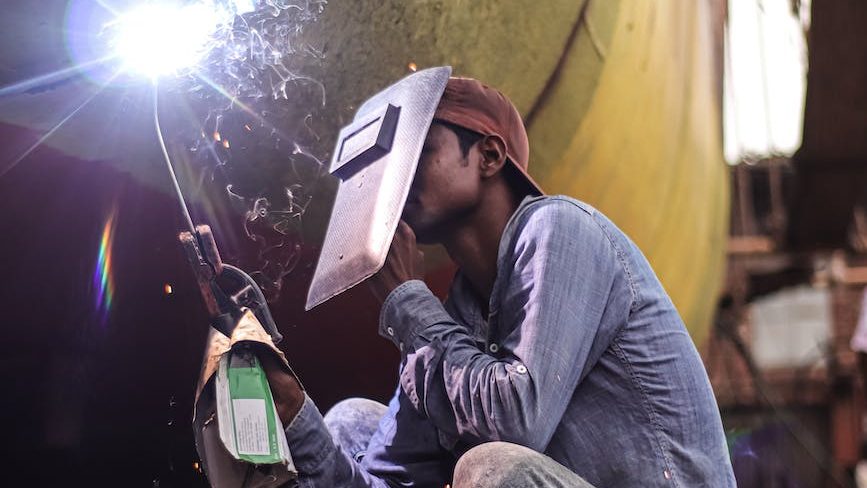
MIG welding, or Metal Inert Gas welding, is a popular method used by both professionals and hobbyists alike for its speed, versatility, and ease of use. If you’re looking to master MIG welding, we’ve compiled some top tips and tricks to help you perfect your skills and create flawless welds.
Understanding the Basics of MIG Welding
Before you start welding, it’s essential to understand the fundamentals of MIG welding. This process uses a continuous wire feed as an electrode, which is heated by an electric arc to form a weld pool. The weld pool is protected from contamination by an inert shielding gas, typically argon or a mix of argon and carbon dioxide. MIG welding is suitable for a variety of metals, including mild steel, stainless steel, and aluminum.
Choosing the Right Equipment
To begin your MIG welding journey, you’ll need the proper equipment. This includes a MIG welder, welding helmet, gloves, and protective clothing. Additionally, you’ll need the correct wire, shielding gas, and flow rate to match the type of metal you’re welding. Make sure to consult the welding materials and wire specifications to ensure compatibility.
Prepping Your Workpiece
A clean workpiece is crucial for a successful MIG weld. Start by removing any paint, rust, oil, or dirt from the surface of the metal using a wire brush or grinder. Properly preparing your workpiece will help to ensure a strong, clean weld and minimize the risk of contamination.
Setting the Correct Voltage and Wire Feed Speed
One of the keys to mastering MIG welding is finding the optimal voltage and wire feed speed for your specific project. These settings depend on factors such as the thickness of the metal, the type of wire, and the desired weld appearance. Experiment with different settings on scrap metal before welding your actual workpiece to find the best combination for your needs.
Maintaining a Steady Torch Position and Travel Speed
Proper torch positioning and travel speed are essential for producing a clean, uniform weld. Hold the torch at a 10-15 degree angle to the workpiece, keeping a consistent distance from the metal. Travel at a steady pace, maintaining the same speed throughout the weld to avoid overheating and warping.
Using the Right Welding Technique
There are several techniques used in MIG welding, such as the push, pull, whip, and weave. The push technique involves pushing the torch away from the weld pool, which provides better visibility and is suitable for thinner materials. The pull technique involves dragging the torch towards the weld pool, which offers deeper penetration for thicker metals. The whip and weave techniques involve moving the torch in specific patterns to create a wider, more uniform weld bead.
Monitoring and Fine-tuning Your Welds
As you practice MIG welding, continually assess your welds to identify areas for improvement. Inspect the weld bead’s appearance, penetration, and consistency, and adjust your technique, voltage, or wire feed speed as needed. A well-executed MIG weld should have a smooth, uniform appearance without excessive spatter, porosity, or undercutting.
Practicing Safety Measures
Safety should always be a top priority when welding. Ensure that you wear appropriate protective gear, such as a welding helmet, gloves, and flame-resistant clothing. Follow welding safety guidelines and keep your workspace well-ventilated to minimize the risk of injury.
Conclusion
Mastering MIG welding takes time, patience, and practice. By understanding the fundamentals, choosing the right equipment, and
refining your technique, you can become proficient in this versatile and popular welding method. Remember to prioritize safety and continually evaluate your welds to identify areas for improvement. With dedication and practice, you’ll soon be creating professional-quality welds using MIG welding.
Frequently Asked Questions
1. Can MIG welding be used on all types of metals?
MIG welding is suitable for a variety of metals, including mild steel, stainless steel, and aluminum. However, it may not be the best choice for all metals, such as cast iron or copper. Consult the specific welding materials guidelines for the best method to use on your chosen metal.
2. Is MIG welding suitable for beginners?
Yes, MIG welding is considered one of the easiest welding processes to learn, making it an excellent choice for beginners. It offers a more straightforward technique and is more forgiving than other methods, such as TIG or stick welding.
3. What is the difference between MIG and TIG welding?
MIG welding uses a continuous wire feed as an electrode and is protected by an inert shielding gas, while TIG (Tungsten Inert Gas) welding uses a non-consumable tungsten electrode and a separate filler material. TIG welding is known for its precision and clean welds but requires more skill and practice compared to MIG welding.
4. How do I know which shielding gas to use for MIG welding?
The choice of shielding gas depends on the type of metal being welded and the desired weld appearance. Argon, or a mix of argon and carbon dioxide, is commonly used for MIG welding. Consult the specific wire and metal specifications to determine the appropriate shielding gas for your project.
5. Can I MIG weld without shielding gas?
MIG welding without shielding gas is not recommended, as the gas protects the weld pool from contamination and oxidation. However, you can use flux-cored arc welding (FCAW), a process similar to MIG welding, which uses a flux-cored wire that produces its shielding gas when heated.
